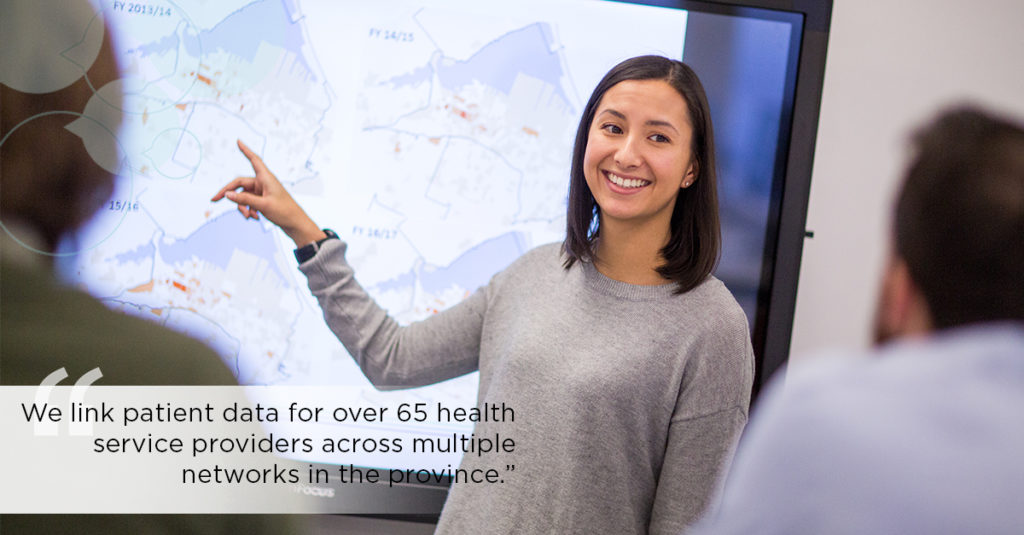
Introducing… a performance advisor
Chloe Nyitray is a performance advisor on the integrated decision support (IDS) team based in our King West office. She has been with Hamilton Health Sciences (HHS) for over two years.
What do you love most about your role?
I really love how my role has many different components. I am constantly collaborating with my brilliant team members, external partner organizations like the Hamilton Niagara Haldimand Brant Local Health Integration Network (HNHB LHIN) and analysts at various hospitals. There is a lot of potential for innovation working with data and I get excited we can make data-driven decisions for the patient.
What do you find challenging?
It is a challenge to try to tell the patient story from the data we collect. We actively use data to understand how the health system delivers care. Our hope is we create a model that identifies the tipping point of a patient from being an elevated risk to a high user of healthcare services. Personally, I find it challenging not being able to directly see how my work affects the patient. Regardless of your role in healthcare, I believe we all have a common goal to improve patient care.
We want to create a model that identifies the tipping point of a patient from being an elevated risk to a high user of healthcare services.
Describe a typical day
Performance advisors often wear multiple hats, so a typical day isn’t all that typical. However, we certainly work with data daily to answer analytical questions about patients and services. I work with our IDS data to do routine reporting and analytics on Hospital 2 Home patient outcomes. This includes writing complex queries, creating easy-to-understand visuals and working with clinicians to extract our findings. I also have the pleasure of working with my IDS colleagues to collaborate on cool analytical reports and tools shared with a user community of over 750 IDS users across Ontario.
Tell us about your most gratifying experience at HHS
Our HNHB LHIN region works hard to guide the complex patient population through the Health Links model of care. In my two and a half years, I’ve watched the scale and spread of this initiative and collaborated with the LHIN to analyze this population. In fact, our co-authored paper will soon publish in Canadian Medical Association Journal. Overall, it’s amazing to see success stories from my colleagues, including our outreach team winning the Minister’s Medal or my IDS team members selected as finalists for an internal contest to demonstrate how we lead in research, innovation and learning.
What’s one thing people would be surprised to learn about your role?
I think most people would be surprised to learn how collaborative our work is across Ontario. Our IDS data solution links patient data for over 65 health service providers across six LHINs. This data describes various continuums of healthcare such as emergency department visits, admissions, rehabilitation and home and community care–a total of seven million patient journeys. We regularly work with peers outside of our region to drive innovation.
